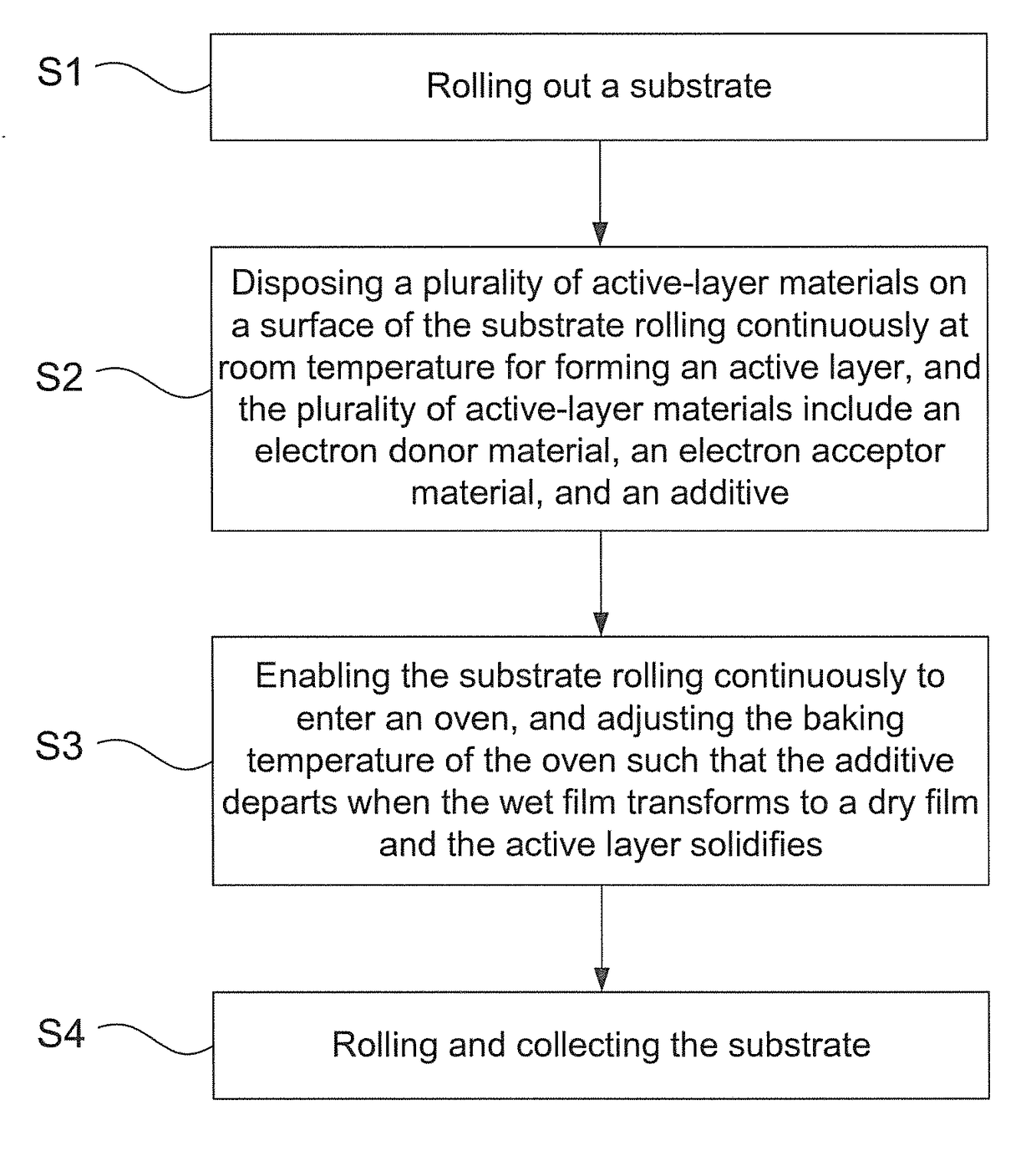Method for improving mass-production yield of large-area organic solar cells
a technology of organic solar cells and large-area processing, which is applied in the direction of solid-state devices, sustainable manufacturing/processing, and final product manufacturing, etc., can solve the problems of affecting affecting the stability of organic solar cells, and residual additives also affecting significantly the life of devices, so as to improve the mass-production yield of large-area organic solar cells, improve the quality of active layers, and improve the effect of production yield
- Summary
- Abstract
- Description
- Claims
- Application Information
AI Technical Summary
Benefits of technology
Problems solved by technology
Method used
Image
Examples
Embodiment Construction
[0014]In order to make the structure and characteristics as well as the effectiveness of the present invention to be further understood and recognized, the detailed description of the present invention is provided as follows along with embodiments and accompanying figures.
[0015]Please refer to the FIGURE. The method for improving mass-production yield of organic solar cells according to the present invention comprises steps of:[0016]Step S1: Rolling out a substrate;[0017]Step S2: Disposing a plurality of active-layer materials on a surface of the substrate rolling continuously at room temperature for forming an active layer, and the plurality of active-layer materials includes an electron donor material, an electron acceptor material, and an additive;[0018]Step S3: Enabling the substrate rolling continuously to enter an oven, and adjusting the baking temperature of the oven such that the additive departs when the wet film transforms to a dry film and the active layer solidifies; and...
PUM
| Property | Measurement | Unit |
|---|---|---|
| temperature | aaaaa | aaaaa |
| temperature | aaaaa | aaaaa |
| temperatures | aaaaa | aaaaa |
Abstract
Description
Claims
Application Information
 Login to View More
Login to View More - R&D
- Intellectual Property
- Life Sciences
- Materials
- Tech Scout
- Unparalleled Data Quality
- Higher Quality Content
- 60% Fewer Hallucinations
Browse by: Latest US Patents, China's latest patents, Technical Efficacy Thesaurus, Application Domain, Technology Topic, Popular Technical Reports.
© 2025 PatSnap. All rights reserved.Legal|Privacy policy|Modern Slavery Act Transparency Statement|Sitemap|About US| Contact US: help@patsnap.com

